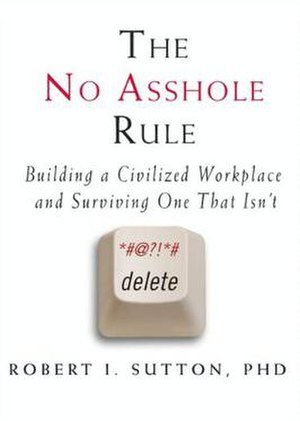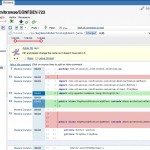This post is dedicated to Eli Saad for encouraging me in my Gaga Pumpkin endeavors and for being himself every day. I’ll miss you!
Recently, Lady Gaga visited Google in her thigh boots and everything. You can watch the brilliant frakking youTube video here.
In the video, Marissa Mayer asks Gaga questions that were gathered from YouTube. Questions are also asked by Googlers in the audience. Usually when a star gets interviewed with questions, it’s a mixed bag. With Gaga, I found that there was a coherent theme around something I’ve been bursting at the seams to write about: congruence.
I hear it now..Congruence??? What the fu**…Marlena!! What is that? Isn’t that what you test? Um…no. It’s psychology, bitches. That’s right…I said the P word. Jonathan Kohl wrote a blog post about it which is a favorite of mine. My post will expand on his, explain this concept with the help of Gaga and why we must practice it to build great software and to be great testers.
Let’s start with a quote from the interview about unlocking your creativity:
“I really encourage people to look into the darkness and to look into the places that you would not normally look to find uniqueness and specialness because that’s where the diamonds are hiding.”
Each of us is unique and special. Unfortunately, this is not always respected. In Gaga’s case, she was bullied pretty hard in school. Note that bullying can happen at school OR work. For whatever the reason, bullies can tear us down, make us feel small and undermine our confidence. When this happens, it is very difficult to expose our uniqueness or creativity because a smack-down or a slushee might be waiting around the corner.
We hide who we are as a defense mechanism. This is why people will often hide away whatever part of themselves is unique and special. Unfortunately, being human doesn’t work this way. When we try to hide who we are, when we show the world what we think it wants to see the results might be passable, but they will never be great and they will likely worsen over time.
Let’s think about what exploratory testers are trying to accomplish. We want to learn the software. We want to explore the software. We do this by opening our mind to the possibilities of what can happen. We learn to trust our instincts about where a user will want to take that and what can go wrong when they do.
For exploratory testing to be successful: We MUST be open. We MUST be curious. We MUST be intuitive.
(Which of these people to the right is not like the other? Answer: ALL OF THEM)
This leads me to ask:
If the everyday reality of your team or your company requires hiding from who you are and pushing away from your inner self and your intuition, how can you be intuitive about what you are testing? If you are someone who is hyper-critical of others (just a few testers in that group), are you causing others to feel that they have to hide themselves or their opinions from you in some way?
Congruence is about matching who you are on the inside with who you are on the outside. What you say to people represents what you are thinking and feeling, not what you think you should be feeling and definitely not what you think the person with whom you are speaking wants to hear.
Going back to the interview, during the section where Googlers are asking questions, a guy in a shiny, pointy hat asks Gaga how she reconciles her onstage “persona” with who she is in real life. Gaga looks him in the eye and chuckles, “Who are you looking for?? I”m right here! Stephanie’s also who I am! Gaga’s just my nickname… I really make absolutely no separation between Stephanie and Gaga. It is the absolute same person…and it is a gift I wish I could give to anyone.” You can’t get any more congruent than that.
So what have we got at this point in our post? We’ve got the Lady in all her Gaga-ness, and we’ve got me saying that it should be totally acceptable to be who you are at all times. I’m sure there are a number of you reading this and thinking, “but she is so offensive to me.” If this is how you feel about Lady Gaga, and you’re still with me in this post, thank you for giving me the room to finish what I have to say on this topic. Please stay with me just a bit longer.
Congruence doesn’t stop at being who you are on an every day basis. It also means recognizing where you stand in the face of conflict. This is where the diamond shines most brightly in Jonathan Kohl’s post: “Whenever I vocalize a small concern even when the rest of the team is going another direction, it is worthwhile. Whenever I don’t, we end up with problems. It helps me retain my independence as an individual working in a team. If everyone does it, we get diverse opinions, and hopefully diverse views on potential risks instead of getting wrapped up in groupthink.” Vocalizing big and small concerns even when the rest of the team is going in another direction is what a tester does. If we can’t be who we are and have the independence to say what we feel, we will fail in our mission as testers. Notice also that Jonathan is saying, “If everyone does it.”
This leads to another question:
How can everybody be themselves at the same time without offending each other?
In this situation it is inevitable that there will be disagreement. If we are channeling our inner-selves and letting the freak flag fly, it is inevitable that someone might get offended. This is when tolerance and mutual respect are a must ON BOTH SIDES.
1. Others should respect and be tolerant of you.
2. You should respect and be tolerant of others.
If either side fails to respect the other and someone is pushed further than they can go, there’s a good chance that the argument will turn personal and, in that situation, everyone loses along with the customer. We have to be able to argue constructively with each other and express what we’re thinking when we think it. We have to be able to do this openly and without fear. If we can’t do this, then we are effectively muzzled as testers and as people. As an illustration of the type of freedom that follows from respect and tolerance, I recently spoke with a developer who expressed his respect for bugs that simply say, “this is awkward.” Is this something you can do at your job? As testers we need to be free to express what we observe when we observe it even if it’s just a feeling that we flesh out at a later time when we are finished observing. This is the road to creativity. Another quote from Gaga: “The most important thing is to honor your creativity and don’t ignore it…It’s when you say, ‘Oh I’m too tired let me just go to bed.’ That’s when the creativity stops coming…You know, if God calls you, pick up the damn phone. Hello!”
I bet if Lady Gaga were an exploratory tester she would be pretty good.
Congruence is all about being the same person on the inside and the outside. What you are thinking and feeling are in concert with what you are saying and doing. Anything else is a compromise. Most of the time, compromise is essential for getting things done and coming to a conclusion in a respectful way, but when it comes to being the person you are, there should never be a need for compromise. Be who you are, not what others say you should be.























